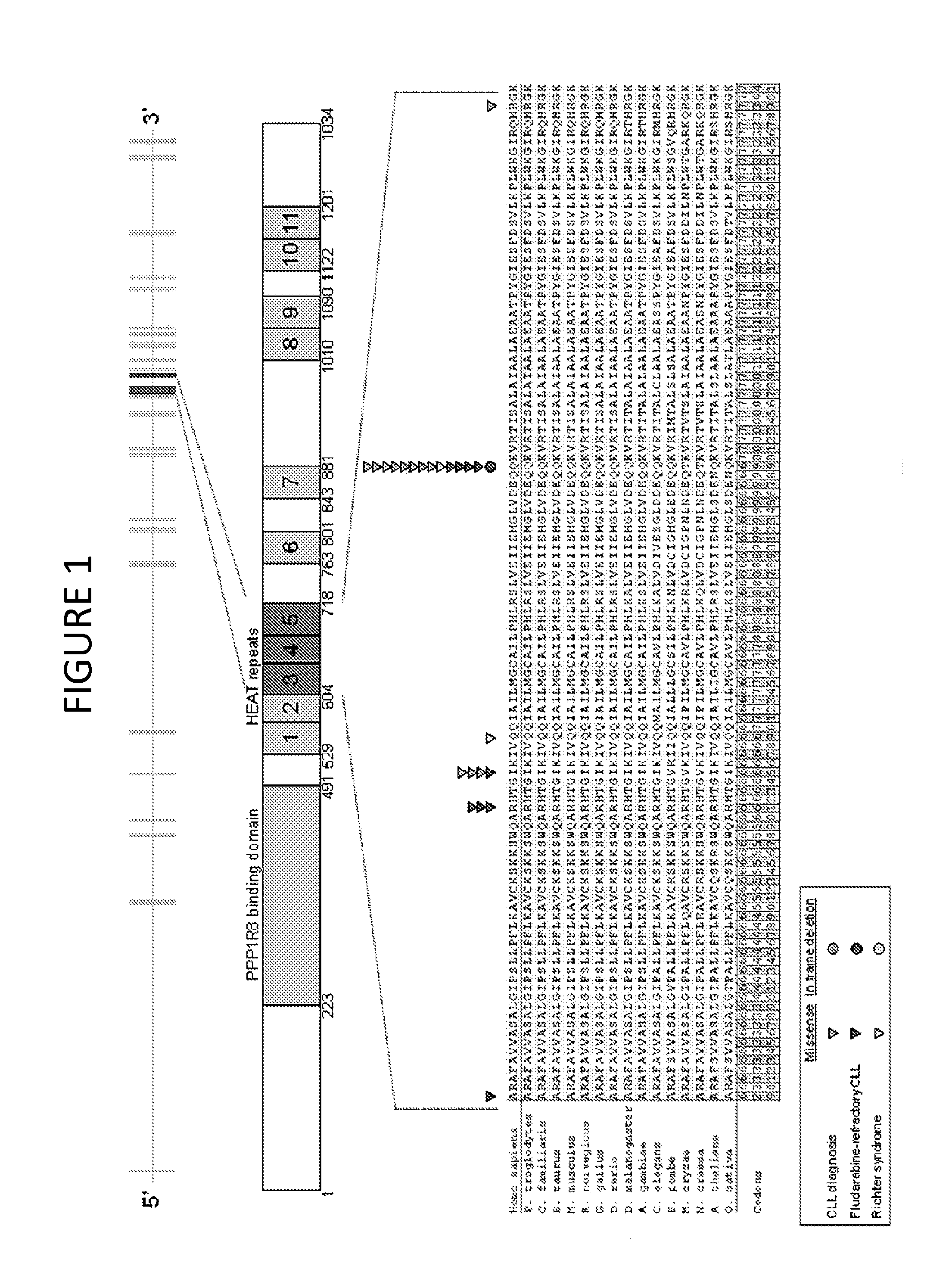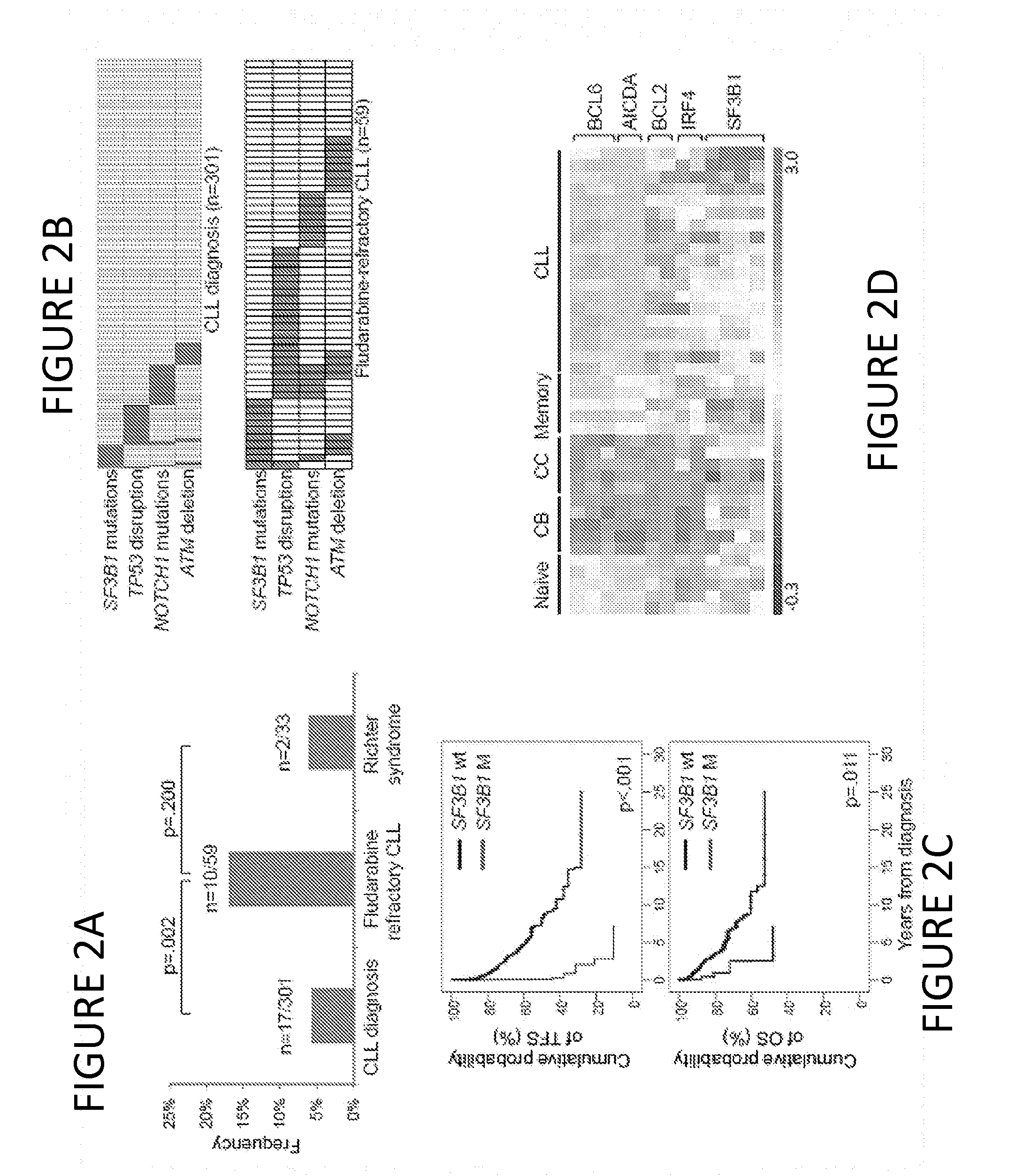Mutations in SF3B1 and Chronic Lymphocytic Leukemia
- Summary
- Abstract
- Description
- Claims
- Application Information
AI Technical Summary
Benefits of technology
Problems solved by technology
Method used
Image
Examples
example 1
Patients and Methods
Patients
[0075]The study population included three clinical cohorts representative of different disease phases: i) fludarabine-refractory CLL (n=59), including cases (n=11) subjected to whole exome sequencing (Table 1); ii) a consecutive series of newly diagnosed and previously untreated CLL (n=301) (Table 2); and iii) clonally related RS (n=33; all diffuse large B cell lymphomas) (Table 3). CLL diagnosis was based on the IWCLL-NCI criteria (Hallek M, et al. Blood. 2008; 111(12):5446-5456); diagnosis of fludarabine-refractoriness was according to guidelines (Hallek M, et al. Blood. 2008; 111(12):5446-5456); RS was based on histological criteria (Müller-Hermelink H K, et al. Swerdlow S H et al eds. World Health Organization Classification of Tumours, Pathology and Genetics of Tumours of Haematopoietic and Lymphoid Tissues. Lyon, France: IARC; 2008: 180-182; Stein H et al. Swerdlow S H et al. eds. World Health Organization Classification of Tumours, Pathology and Ge...
example 2
Mutations in the SF3B1 Splicing Factor Affect Progression and Fludarabine-Refractoriness of Chronic Lymphocytic Leukemia
[0082]Following the initial observation of recurrent SF3B1 mutations in 3 / 11 fludarabine-refractory CLL analyzed by whole exome sequencing, targeted re-sequencing of the SF3B1 coding sequence and splice sites was performed in 48 additional cases of progressive and fludarabine-refractory CLL (total number of cases analyzed: 59), collected at the time of progression immediately before starting the treatment to which the patient eventually failed to respond (Table 1). SF3B1 was altered in 10 / 59 (17%) fludarabine-refractory CLL by missense mutations (n=9) or in-frame deletions (n=1) clustering in the HEAT3, HEAT4 and HEAT5 repeats of the SF3B1 protein (FIG. 1 and FIG. 2A; Table 4). Two sites that are highly conserved inter-species (codon 662 and codon 700) were recurrently mutated in 3 and 5 cases, respectively (FIG. 1). SF3B1 mutations were monoallelic and were predi...
PUM
 Login to View More
Login to View More Abstract
Description
Claims
Application Information
 Login to View More
Login to View More - R&D
- Intellectual Property
- Life Sciences
- Materials
- Tech Scout
- Unparalleled Data Quality
- Higher Quality Content
- 60% Fewer Hallucinations
Browse by: Latest US Patents, China's latest patents, Technical Efficacy Thesaurus, Application Domain, Technology Topic, Popular Technical Reports.
© 2025 PatSnap. All rights reserved.Legal|Privacy policy|Modern Slavery Act Transparency Statement|Sitemap|About US| Contact US: help@patsnap.com


